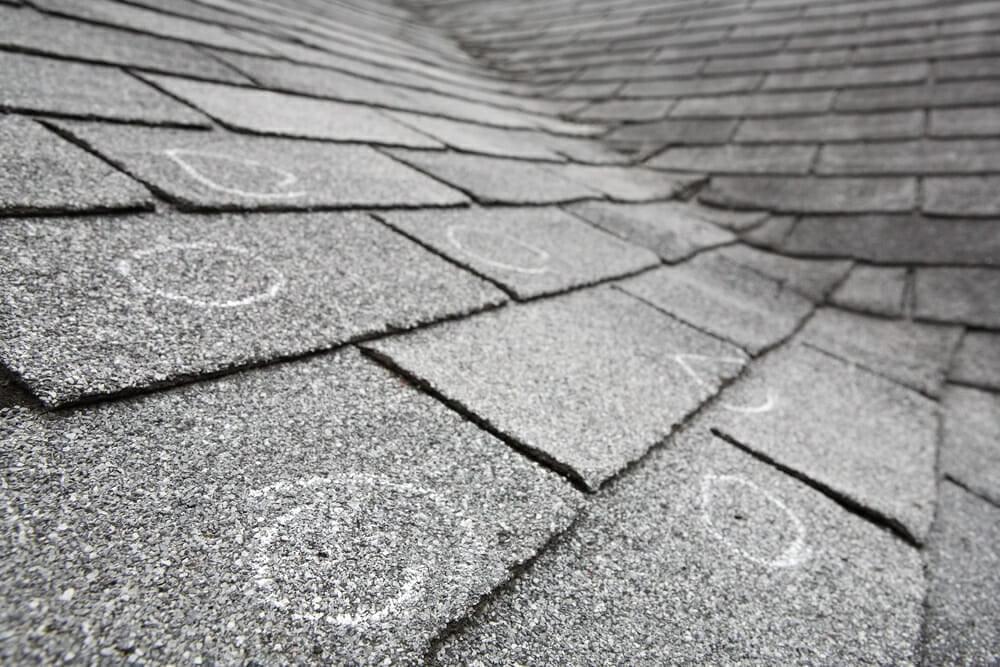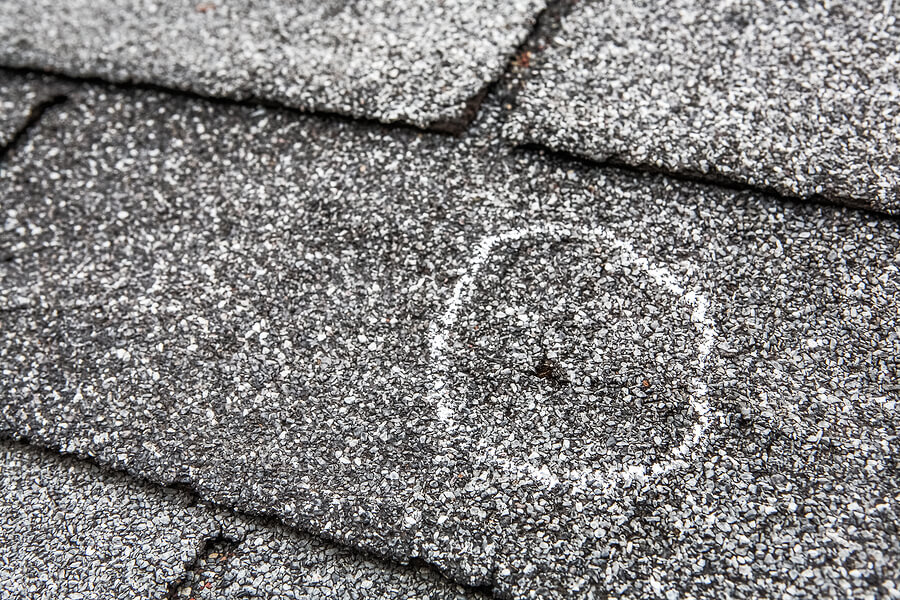Decoding Hail Damage: What Does it Look Like and How to Identify It
Hailstorms can wreak havoc on roofs, vehicles, and property, causing significant damage that may not always be immediately apparent. Identifying hail damage promptly is crucial for initiating repairs and preventing further deterioration. In this blog article, we’ll explore the telltale signs of hail damage and provide tips for homeowners and vehicle owners on how to recognize and address this common weather-related issue.
What is Hail Damage?

Hail damage occurs when hailstones impact surfaces with enough force to cause dents, cracks, or other visible signs of damage. While hail damage is often associated with vehicles and roofing materials, it can also affect siding, windows, gutters, and outdoor appliances.
4 Signs of Hail Damage on Roofs
When a hail storm hits, it can compromise your asphalt shingle’s integrity. While it may not leak immediately, it can decrease your roof’s lifespan by up to five years.
Here are four signs of hail damage homeowners should watch out for:
1. Dents and Pockmarks

Hailstones can leave behind dents and pockmarks on roofing materials such as asphalt shingles, metal panels, and clay tiles. These indentations may be visible upon close inspection and can vary in size and severity.
2. Loose or Missing Granules
Asphalt shingles may loose granules upon impact from hailstones, resulting in bare spots or patches on the surface of the roof. Excessive granule loss can compromise the integrity of the shingles and expose the underlying layers to further damage.
3. Cracks or Tears

Hailstones can cause cracks or tears in roofing materials, particularly in older or weathered roofs. These cracks may not always be immediately visible and may require a closer examination to detect.
4. Leaks and Water Stains
Hail damage can lead to roof leaks, resulting in water infiltration and staining on interior ceilings, walls, or attic spaces. Water stains may appear as discolored patches or streaks and may worsen over time if left untreated.
What to Do If You Suspect Hail Damage
Inspect Your Property: Conduct a thorough inspection of your roof, vehicles, and outdoor surfaces for signs of hail damage. Take photographs or videos to document the damage for insurance purposes.
Contact Your Insurance Provider: If you suspect hail damage, contact your insurance provider to initiate the claims process. Provide documentation and evidence of the damage, including photos, videos, and written descriptions.
Schedule Repairs: Once your insurance claim is approved, schedule repairs with qualified contractors or auto repair shops to address the hail damage promptly. Be sure to work with reputable professionals who have experience in handling hail damage repairs.
Identifying Hail Damage
Hail damage can have a significant impact on property owners, causing costly repairs and disruptions to daily life. By knowing how to identify the signs of hail damage and taking prompt action to address it, homeowners and vehicle owners can minimize the long-term effects and protect their investments.
Whether it’s dents on a roof or dimples on a car, being vigilant and proactive is key to mitigating the impact of hailstorms and maintaining the integrity of your property.
Learn more with “How Much Hail Damage Do You Need For A Roof Replacement” and “How to Tell if Your Roof Has Hail Damage.”
Are you worried your roof has been compromised by hail damage? Rescue My Roof can help. Contact us today to get a free roof estimate.

